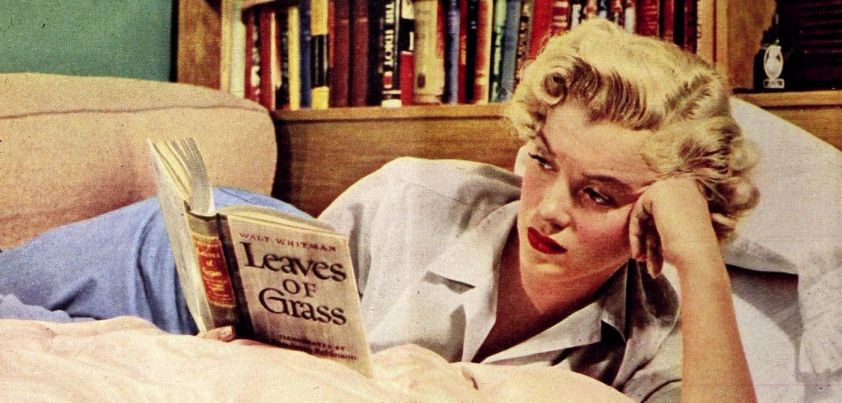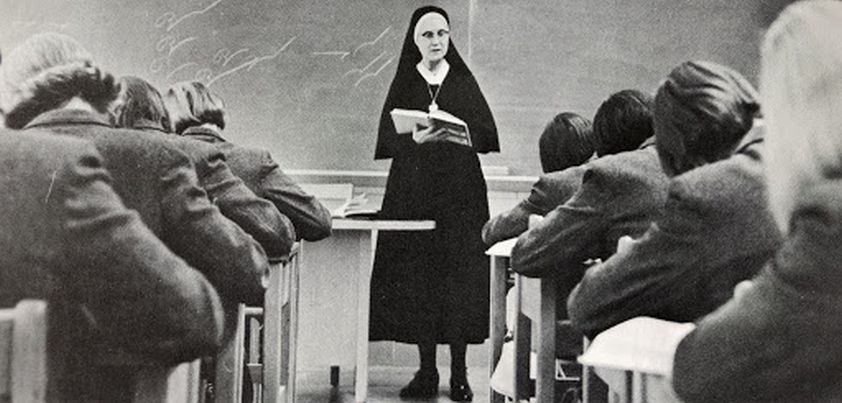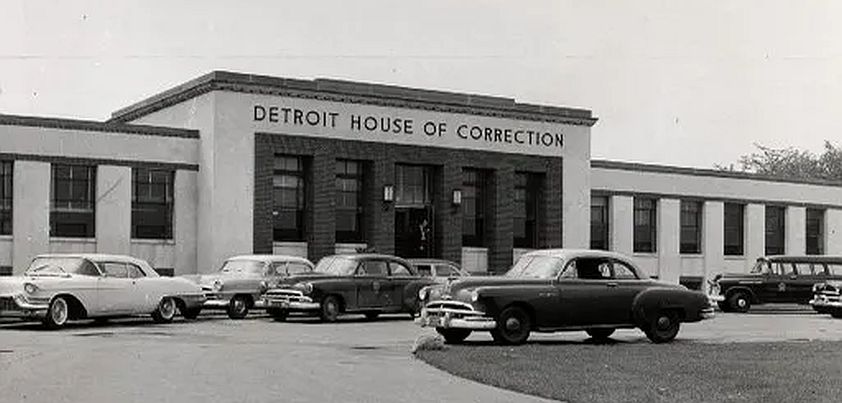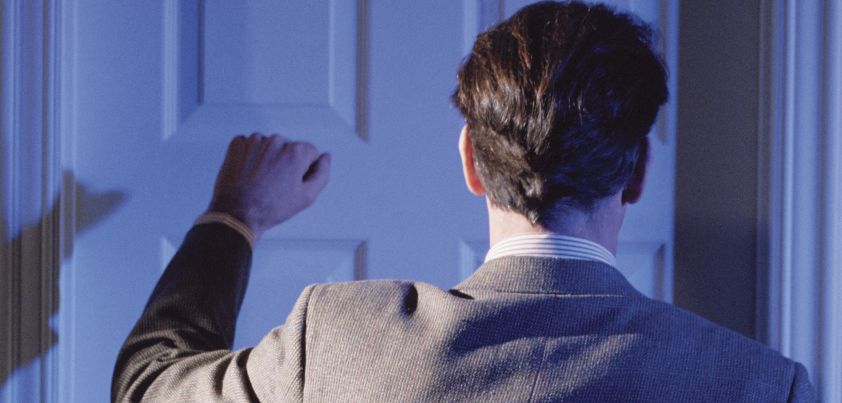 In this story by Joyce Carol Oates a woman recalls when, as a college student, she and a fellow girl-poet encountered a woman they believed to be a heavily disguised Marilyn Monroe browsing in a used bookstore. Torn between acknowledging the woman and protecting her privacy, they choose the latter. “Marilyn” gives them a book as a memento and leaves. For the girls, who are coming to grips with their sexuality and mutual attraction against social norms of the time, the shared experience triggers a first kiss. Themes include identity, gender norms, sexuality, passion, courage, stereotypes. More…
In this story by Joyce Carol Oates a woman recalls when, as a college student, she and a fellow girl-poet encountered a woman they believed to be a heavily disguised Marilyn Monroe browsing in a used bookstore. Torn between acknowledging the woman and protecting her privacy, they choose the latter. “Marilyn” gives them a book as a memento and leaves. For the girls, who are coming to grips with their sexuality and mutual attraction against social norms of the time, the shared experience triggers a first kiss. Themes include identity, gender norms, sexuality, passion, courage, stereotypes. More…
Archives
In the Region of Ice
 In this story by Joyce Carol Oates, a young nun teaching her first semester at a Jesuit university is confident in her academic role but feels confused and alienated by the outside world. Things change when a brilliant but mentally disturbed Jewish graduate student joins her literature class. Although stimulated by his questions and probing mind, he exhibits a need for emotional support beyond her comfort zone. When she refuses a request to lend him money and take his hand, he becomes hysterical and verbally abusive. Themes include identity, connection (emotional detachment), mental illness, alienation, faith, compassion. More…
In this story by Joyce Carol Oates, a young nun teaching her first semester at a Jesuit university is confident in her academic role but feels confused and alienated by the outside world. Things change when a brilliant but mentally disturbed Jewish graduate student joins her literature class. Although stimulated by his questions and probing mind, he exhibits a need for emotional support beyond her comfort zone. When she refuses a request to lend him money and take his hand, he becomes hysterical and verbally abusive. Themes include identity, connection (emotional detachment), mental illness, alienation, faith, compassion. More…
Shopping
 This story is about motherly love taken too far. Joyce Carol Oates uses a trip to the mall to explore the relationship between a lonely, divorced mother and her 17-year-old daughter. At one point, the mother wants to ask her daughter: Why are you unhappy? Why do you hate me? Later, the mother stares at her with hatred. The girl is blossoming into independent womanhood. She has been the sole focus of her mother’s life, and the mother is having trouble “letting go”. Themes include helicopter parenting, loneliness, alcoholism and identity. More…
This story is about motherly love taken too far. Joyce Carol Oates uses a trip to the mall to explore the relationship between a lonely, divorced mother and her 17-year-old daughter. At one point, the mother wants to ask her daughter: Why are you unhappy? Why do you hate me? Later, the mother stares at her with hatred. The girl is blossoming into independent womanhood. She has been the sole focus of her mother’s life, and the mother is having trouble “letting go”. Themes include helicopter parenting, loneliness, alcoholism and identity. More…
Heat
 In this confronting story by Joyce Carol Oates, mischievous eleven-year-old twin girls are brutally murdered by Roger Whipple, a supposedly harmless, mentally challenged man. Major themes are power, cruelty and violent revenge. The twins exercise persuasive power by demanding compliance with their wishes from school friends and cruelly harassing and making fun of Roger. The power theme is emphasized through anecdotes about the girls’ antics and dark humor: We liked it that Rhea and Rhoda had been killed … but we didn’t like it that they were dead; we missed them. In the end revenge, and Roger’s physical power, prevail. More…
In this confronting story by Joyce Carol Oates, mischievous eleven-year-old twin girls are brutally murdered by Roger Whipple, a supposedly harmless, mentally challenged man. Major themes are power, cruelty and violent revenge. The twins exercise persuasive power by demanding compliance with their wishes from school friends and cruelly harassing and making fun of Roger. The power theme is emphasized through anecdotes about the girls’ antics and dark humor: We liked it that Rhea and Rhoda had been killed … but we didn’t like it that they were dead; we missed them. In the end revenge, and Roger’s physical power, prevail. More…
How I Contemplated the World from the Detroit House of Correction and Began My Life Over Again
 The experimental style of this Joyce Carol Oates story takes a little getting used to. In the form of a disorganized set of notes for an English writing assignment, a sixteen-year-old girl reviews the events that landed her in government care. Starved of affection by her wealthy parents, her acts of rebellion escalate from shoplifting to running away from home and falling under the spell of a prostitute and her Svengali-like, drug-addicted pimp. Sadly, the House of Correction isn’t the sanctuary she thought it would be. Themes parental neglect, rebellion, human trafficking, drug use, class and racial conflict. More…
The experimental style of this Joyce Carol Oates story takes a little getting used to. In the form of a disorganized set of notes for an English writing assignment, a sixteen-year-old girl reviews the events that landed her in government care. Starved of affection by her wealthy parents, her acts of rebellion escalate from shoplifting to running away from home and falling under the spell of a prostitute and her Svengali-like, drug-addicted pimp. Sadly, the House of Correction isn’t the sanctuary she thought it would be. Themes parental neglect, rebellion, human trafficking, drug use, class and racial conflict. More…
Four Summers
 This story from Joyce Carol Oates charts the coming of age of a woman through four stages of life: infancy, childhood, adolescence and early womanhood. Her emotional development and the lives of those around her are portrayed through experiences over four summers at the same lakeside bar. Growing up in a working class environment in which hard drinking and angry outbursts are the norm, she is increasingly disillusioned by what she sees. At nineteen, she finds herself married, pregnant and facing a life of the same. Themes include marriage, family and the role of social class in determining one’s future. More…
This story from Joyce Carol Oates charts the coming of age of a woman through four stages of life: infancy, childhood, adolescence and early womanhood. Her emotional development and the lives of those around her are portrayed through experiences over four summers at the same lakeside bar. Growing up in a working class environment in which hard drinking and angry outbursts are the norm, she is increasingly disillusioned by what she sees. At nineteen, she finds herself married, pregnant and facing a life of the same. Themes include marriage, family and the role of social class in determining one’s future. More…
Where Are You Going, Where Have You Been?
 The plot of this award-winning story by Joyce Carol Oates in a nutshell: attractive, self-absorbed, rebellious teen under Why can’t you be like your big sister? pressure meets a predatory psychopath with, one imagines, predictable results. What sets the story apart is the way Oates, using dialogue alone, transforms a cautionary tale for young women into a psychological thriller that gradually develops into a horror story. Themes include search for identity, independence, sexuality and control, appearance vs. reality, malevolence, psychological manipulation and (if you believe Connie really sacrificed herself for her family), self-sacrifice. More…
The plot of this award-winning story by Joyce Carol Oates in a nutshell: attractive, self-absorbed, rebellious teen under Why can’t you be like your big sister? pressure meets a predatory psychopath with, one imagines, predictable results. What sets the story apart is the way Oates, using dialogue alone, transforms a cautionary tale for young women into a psychological thriller that gradually develops into a horror story. Themes include search for identity, independence, sexuality and control, appearance vs. reality, malevolence, psychological manipulation and (if you believe Connie really sacrificed herself for her family), self-sacrifice. More…
Where Is Here?
 One of the beauties of this unsettling story by Joyce Carol Oates is that it is open to many interpretations depending on how much one reads into the visitor’s identity and purpose. At its simplest, the story involves a man behaving strangely as he confronts pleasant and unpleasant memories during a visit to his childhood home. More imaginative interpretations include revisiting a scene of child abuse and/or patricide, and a ghostly warning from the past or future about looming danger or a cursed house. Themes: (general) nostalgia, connection, domestic violence; (through the riddles) mortality, time, infinity. More…
One of the beauties of this unsettling story by Joyce Carol Oates is that it is open to many interpretations depending on how much one reads into the visitor’s identity and purpose. At its simplest, the story involves a man behaving strangely as he confronts pleasant and unpleasant memories during a visit to his childhood home. More imaginative interpretations include revisiting a scene of child abuse and/or patricide, and a ghostly warning from the past or future about looming danger or a cursed house. Themes: (general) nostalgia, connection, domestic violence; (through the riddles) mortality, time, infinity. More…